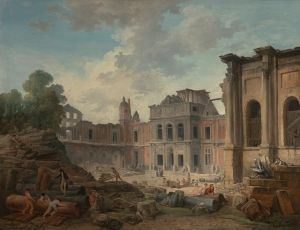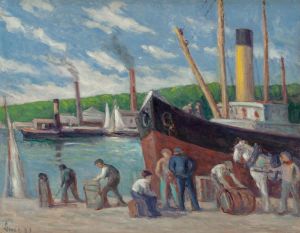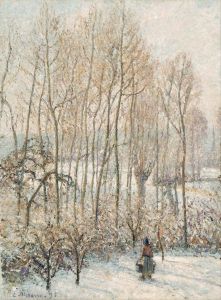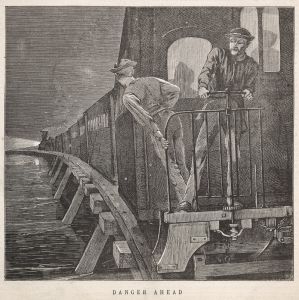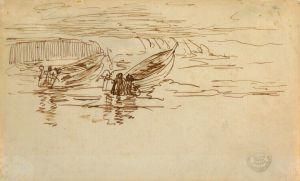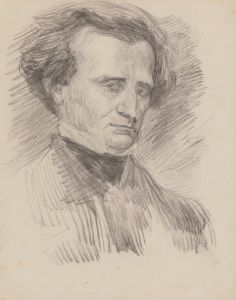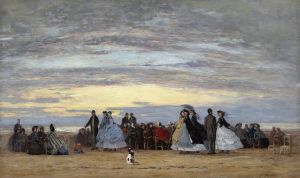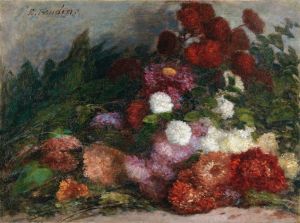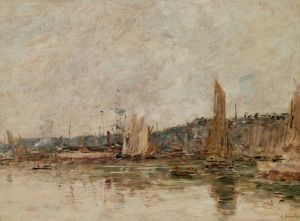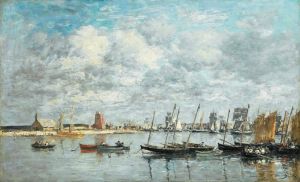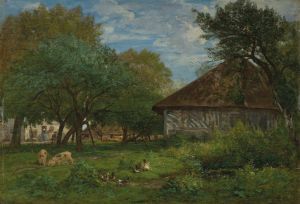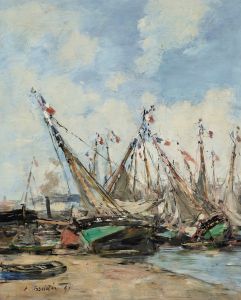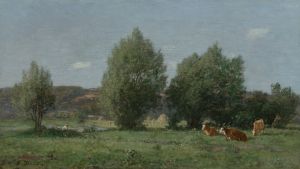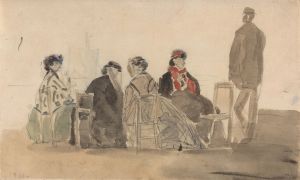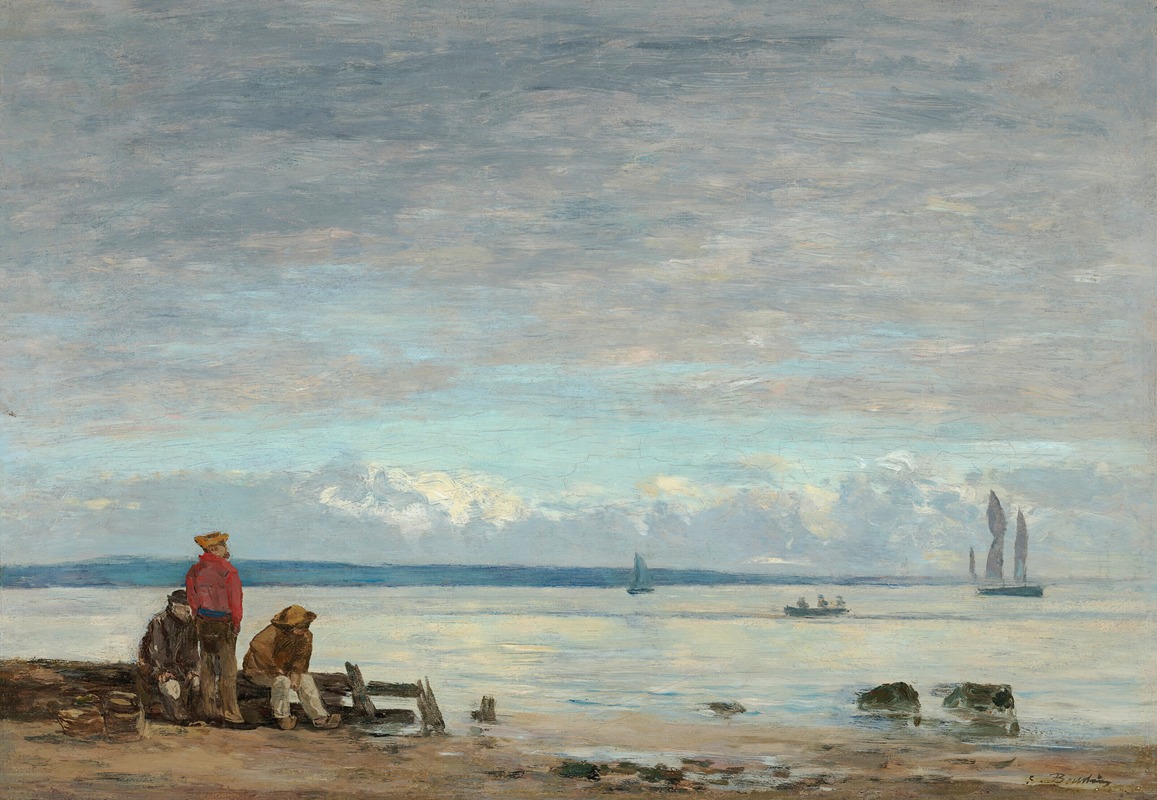
Honfleur. Pêcheurs sur la grève
A hand-painted replica of Eugène Boudin’s masterpiece Honfleur. Pêcheurs sur la grève, meticulously crafted by professional artists to capture the true essence of the original. Each piece is created with museum-quality canvas and rare mineral pigments, carefully painted by experienced artists with delicate brushstrokes and rich, layered colors to perfectly recreate the texture of the original artwork. Unlike machine-printed reproductions, this hand-painted version brings the painting to life, infused with the artist’s emotions and skill in every stroke. Whether for personal collection or home decoration, it instantly elevates the artistic atmosphere of any space.
Eugène Boudin's Honfleur. Pêcheurs sur la grève (translated as Honfleur. Fishermen on the Shore) is a painting by the renowned French artist Eugène Boudin, who is widely regarded as one of the precursors of Impressionism. Boudin is celebrated for his depictions of coastal scenes, skies, and the interplay of light and atmosphere, particularly in the Normandy region of France. This painting reflects his deep connection to the seaside and his ability to capture the everyday lives of people in maritime settings.
The artwork portrays fishermen on the shore in Honfleur, a picturesque port town in Normandy that served as a significant source of inspiration for Boudin throughout his career. Honfleur was a popular destination for artists in the 19th century, and its scenic beauty, with its harbor, beaches, and surrounding landscapes, provided a rich subject matter for painters. In this piece, Boudin focuses on the human activity along the shoreline, depicting fishermen engaged in their daily tasks. The composition emphasizes the relationship between the figures and their natural surroundings, with the expansive sky and coastal environment playing a prominent role.
Boudin's technique in this painting is characteristic of his style, which often involved loose, fluid brushstrokes and a keen attention to the effects of light and weather. His ability to convey the transient qualities of the atmosphere is evident in the way he renders the sky and the reflections on the water. The muted color palette and subtle tonal variations create a sense of harmony and realism, capturing the mood of the scene with sensitivity and precision.
As with many of Boudin's works, Honfleur. Pêcheurs sur la grève demonstrates his interest in depicting ordinary people in their natural environments, rather than idealized or heroic subjects. This focus on everyday life and the natural world aligns with the broader artistic movements of the time, which sought to move away from academic traditions and embrace more modern, realistic approaches to art.
The exact date of the painting is not specified, but it is consistent with Boudin's body of work from the mid-to-late 19th century, a period during which he frequently painted scenes of Honfleur and other coastal towns. Boudin's contributions to art were highly influential, and his work was admired by contemporaries such as Claude Monet, who credited Boudin with encouraging him to paint en plein air (outdoors), a practice that became central to Impressionism.
Today, Honfleur. Pêcheurs sur la grève is recognized as an example of Boudin's mastery in capturing the essence of coastal life and his pivotal role in the development of modern landscape painting. The painting is held in a private collection or museum, though specific details about its current location are not widely documented.





